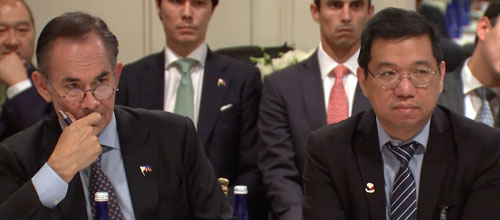Philippine-based companies are looking at increasing salaries by a median of 5.7 percent next year, according to consultancy firm WTW.
The NASDAQ-listed firm in a statement said the target increase is up from the 5.5 percent actual increase instituted this year, the highest salary increase budgeted since the pandemic.
The projected increase – which is part of WTW’s findings in its salary budget planning report survey – is attributed to “a continuation of the tight labor market and rising inflation concerns in Asia Pacific (APAC), including the Philippines.”
“The survey results show that 52.5 percent of employers in the Philippines have budgeted for higher salary increases in 2022 compared to last year. When asked whether they have changed their 2022 salary increases from their original projections, only 32.5 percent have made further adjustment from what they have initially planned for while the 51 percent have maintained the pay budgets they set at the start of 2022,” it said.
Of those surveyed, about 59 percent of the respondents cited the concerns over a tighter labor market for their justification in raising salaries. About 58 percent cited the concerns related to cost management e.g., inflation rising cost of supplies. Forty-four percent cited employee expectations for higher increases driven by inflation.
“Compounding economic conditions and new ways of working are leading organizations to continually reassess their salary budgets to remain competitive,” said Patrick Marquina, WTW work & rewards leader for Philippines.
“Although higher salary increases are expected, various industries are showing different developing rhythms. With such a dynamic environment, it’s imperative for organizations not only to have a clear compensation strategy but also a keen understanding and appreciation of the factors that influence compensation growth,” he said.
WTW, however, said t despite concerns on inflation and rising cost, 65 percent of companies are not looking into making more frequent salary increase adjustments with only 35 percent having already increased or planning to increase how often they raise salaries.
“Among those respondents, the vast majority (98 percent) have or will adjust salaries twice per year,” it said.
Attraction and retention issues continue to be a challenge across the country, companies said, although fewer respondents expect those difficulties to be at the same level next year, WTW noted.
“Eighty-six percent (86 percent) are experiencing difficulties attracting talent this year, but only 38 percent expect difficulty in 2023. Similarly, 84 percent of companies reported difficulty retaining employees this year, but that number is expected to drop to just 49 percent next year,” WTW said.
Information Technology skills are most sought after by companies. In the Philippines, 64 percent of the organizations are looking to recruit digital talent in the next 12 months.
“Yet these professions are some of the most difficult to attract and retain, as three-quarters of companies experienced problems in attracting (74 percent) and retaining (66 percent) them,” WTW said.
Companies are taking non-monetary actions for talent attraction and retention, WTW said.
“For example, 65 percent of respondents have increased workplace flexibility, and 20 percent are planning or considering doing so in the next couple of years. More than half of the respondents (58 percent) have placed a broader emphasis on diversity, equity and inclusion (DEI), and 24 percent are planning or considering doing so in the next few years,” it said.
“Additionally, 45 percent of companies continue to enhance recruitment offers with sign-on bonuses and incentive awards, while 22 percent are planning or considering doing so in the next few years,” it added.
The salary budget planning report is compiled by WTW’s reward data intelligence practice. The survey was conducted in April and May 2022.
Approximately 22,570 sets of responses were received from companies across 168 countries worldwide. In Asia Pacific, 6,945 organizations from 14 markets responded.
A total of 385 companies participated in the Philippines across different industries.




